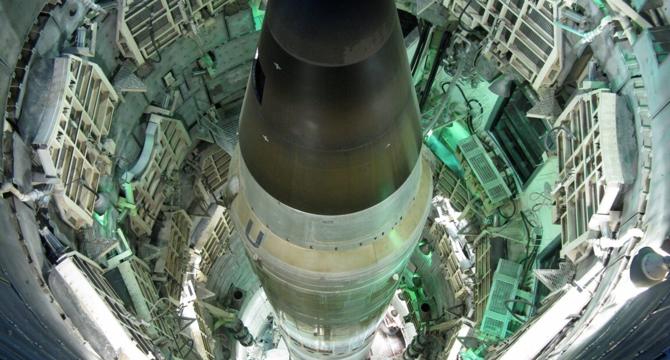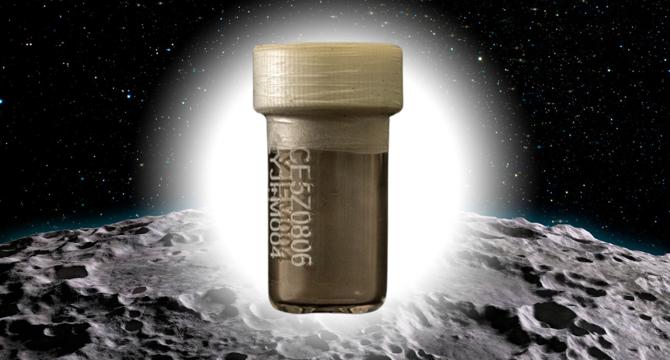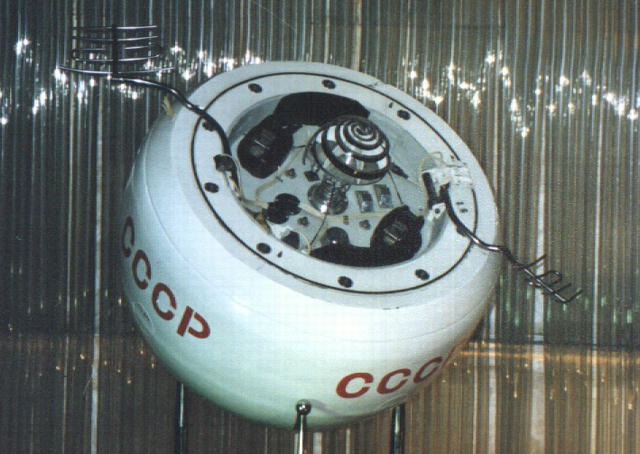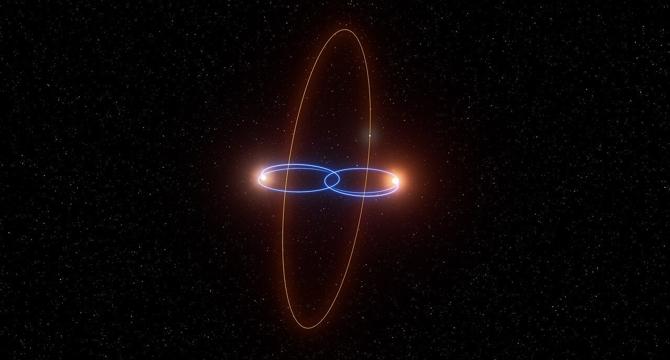Space News
Arstechnica
110

Image Credit: Arstechnica
Rocket Report: Rocket Lab to demo cargo delivery; America’s new ICBM in trouble
- US military focusing on hypersonic weapons fielding and missile detection amidst global advancements by China and Russia.
- Pentagon nearing deployment of hypersonic missiles with combat units, attracting US rocket companies towards the lucrative hypersonics sector.
- Stratolaunch successfully tests reusable hypersonic rocket plane, achieving autonomous landings at Vandenberg Space Force Base in California.
- Company aims to increase flights to monthly frequency by the end of the year, showcasing reusability of its Talon-A vehicle.
Read Full Article
6 Likes
TechJuice
119

Image Credit: TechJuice
China sends rare ‘Moon dust’ to UK for research
- The United Kingdom has received a vial of lunar dust from China for research, the first time in nearly 50 years that Britain has obtained Moon samples.
- The 60-milligram sample collected by China’s Chang’e 5 mission in 2020 is now housed at the Open University in Milton Keynes under Professor Mahesh Anand's supervision.
- The exclusivity and significance of the lunar sample were highlighted by Professor Anand, describing it as 'more precious than gold dust.'
- The UK is one of seven international research teams granted access to these rare lunar materials, indicating a new era of scientific collaboration between China and the global community.
Read Full Article
7 Likes
Earthsky
239

Image Credit: Earthsky
May’s full moon is called the Flower Moon
- The Flower Moon will crest at 11:56 a.m. CDT on May 12, looking full on both May 11 and May 12.
- The best time to watch it is after sunset on May 12, rising low in the southeast and reaching its highest point after midnight.
- This full moon is the 3rd of 3 full micromoons in a row for 2025, being the smallest and most distant.
- It will be 251,828 miles away, glowing near red Antares in Scorpius the Scorpion.
- At full moon, the sun, Earth, and moon align with Earth in the middle, making the moon look round for a day or two.
- The Flower Moon is named after the blooming of wildflowers and garden flowers, enchanting in the moonlight.
- The May full moon's arc across the sky varies depending on the hemisphere, with the Northern Hemisphere seeing a lower arc.
- May's full moon falls in the constellation Libra and will be visible on May 12 before sunrise and on the previous evening.
- It's the last full micromoon of 2025 and a great opportunity to boost your moon-watching mojo.
Read Full Article
14 Likes
Armaghplanet
203

Image Credit: Armaghplanet
Armagh Planetarium Marks 100 Years of Planetaria with New Global Publication and Free Dome Shows
- Armagh Observatory and Planetarium (AOP) celebrates 100 Years of Planetaria with the launch of a new global publication titled '100 Years of Planetaria: 100 Stories of People, Places, and Devices', co-edited by Matthew McMahon.
- The book honors the centenary of the first public planetarium and explores the global impact of planetaria through stories from around the world, highlighting key people, pioneering technologies, and cultural moments.
- Matthew McMahon, the lead editor, emphasizes that planetaria are cultural touchstones where science meets storytelling, and the book recognizes the individuals who have shaped and advanced the modern planetarium.
- To mark the 100-year anniversary, AOP is offering free dome shows to the public, showcasing the history of planetarium, its global influence, and AOP’s unique role in this evolution.
Read Full Article
12 Likes
Discover more
Medium
292

Image Credit: Medium
️ What Is the Event Horizon?
- The event horizon is an invisible shell around a black hole, marking the point where gravity is so intense that not even light can escape.
- Once you cross the event horizon, there is no going back, not even for light or a spaceship, due to the intense gravity.
- The size of an event horizon depends on the mass of the black hole, and tidal forces are less intense in more massive black holes.
- In 2019, the Event Horizon Telescope captured the first image of a black hole's shadow, proving the existence of event horizons.
Read Full Article
17 Likes
Medium
239

Image Credit: Medium
Act Fast: How to Claim SPACE SpaceFi zkSync Tokens
- SpaceFi zkSync (SPACE) airdrops are a simple way to earn free cryptocurrency by holding tokens or participating in community tasks.
- Platforms like DappRadar provide a curated list of legitimate SpaceFi zkSync (SPACE) airdrops, ensuring user protection from scams.
- To claim these airdrops, users need a secure wallet that supports SpaceFi zkSync (SPACE) and related tokens.
- Always prioritize security by never sharing private keys or seed phrases when claiming SpaceFi zkSync (SPACE) airdrops.
Read Full Article
14 Likes
Medium
128

The Dark Matter Delusion: How Physics Spent $50 Billion Chasing a Ghost
- The concept of dark matter was developed to explain the faster-than-expected movement of stars at the outer edges of galaxies.
- However, according to the article, this phenomenon can be understood through relativity, where time dilation effects in gravitational fields account for the discrepancy in star speeds.
- Despite the extensive search efforts and significant investments of over $50 billion in various experiments and projects, no concrete evidence supporting the existence of dark matter has been found.
- The author suggests that it is time to acknowledge that dark matter is a flawed concept and look towards alternative explanations rooted in relativistic theories to understand galactic dynamics.
Read Full Article
7 Likes
Medium
407

Image Credit: Medium
one tuesday, the butterflies that i love so much came back
- The new butterflies that the person loved turned black and rotted, losing their bright colors and strength.
- The person avoided butterflies for a year, living in isolation and darkness, but eventually, soft butterflies came to them on a Tuesday.
- The person was ecstatic and welcomed the new butterflies with open arms, feeling a sense of relief and rejuvenation.
Read Full Article
24 Likes
Medium
243

Image Credit: Medium
Mars Mystery Unveiled: NASA’s Rover Stumbles Upon Unidentified Object in Jezero Crater
- Perseverance's Mastcam-Z camera detected an unidentified object in Jezero Crater, sparking intrigue among NASA scientists. The object's metallic sheen and irregular geometry differ from known Martian rock formations.
- NASA's Jet Propulsion Laboratory collaborated with experts to analyze the object, considering possibilities ranging from a meteorite fragment to human spaceflight debris. The discovery in the delta region of Jezero Crater adds complexity to Perseverance's mission objectives.
- Perseverance's advanced instruments push the boundaries of robotics and AI in Mars' harsh environment, showcasing technological innovation. International collaboration and shared data among NASA, ESA, and academic institutions are emphasizing peaceful cooperation in planetary exploration.
- The mystery surrounding the unidentified object highlights the essence of exploration and the importance of persistence in scientific inquiry. Each discovery on Mars, whether natural or artificial, contributes to humanity's quest to understand the red planet and its potential for past life or future habitation.
Read Full Article
14 Likes
Teslarati
354

Image Credit: Teslarati
Starlink Direct to Cell to boost remote businesses in Chile
- Entel partners with Starlink to provide Direct to Cell services to businesses in Chile and Peru, enhancing connectivity in remote regions.
- The collaboration aims to address connectivity challenges in industries like mining, agriculture, and forestry by utilizing Starlink's satellite technology.
- Entel's Starlink Direct to Cell service offers features like 24/7 network monitoring, proactive management, and observability for real-time connectivity tracking.
- This initiative is set to empower small businesses, drive e-commerce, improve customer communication, and support digital operations in Latin America, contributing to regional economic growth.
Read Full Article
21 Likes
Medium
84

Image Credit: Medium
The Lunar Railway Initiative
- The United States Department of Defense’s DARPA has commissioned a study to research the feasibility of constructing a lunar railway system.
- The Lunar Architecture Capability Study (LunA-10) by Northrop Grumman could significantly impact future lunar colonization.
- The proposed lunar railway system addresses the practical concerns of logistics due to the Moon's large surface area.
- The concept of a Moon railway, once seen as science fiction, may become a vital component for humanity's future on the Moon.
Read Full Article
5 Likes
Knowridge
93

Image Credit: Knowridge
Statistically speaking, we should have heard from aliens by now
- The Fermi Paradox questions the absence of contact with alien life despite the likelihood of multiple civilizations in the Milky Way over cosmic timescales.
- The Drake equation estimates the number of active extraterrestrial civilizations, suggesting a high probability of their existence, yet SETI searches have not detected any signals.
- Matthew Civiletti's paper proposes a model to assess the likelihood of detecting signals from alien civilizations and how it can help refine the parameters of the Drake equation.
- Despite limitations, studies like Civiletti's provide valuable insights into the Fermi Paradox and highlight the significance of non-detections in advancing our understanding of the cosmos and intelligent life.
Read Full Article
5 Likes
Medium
381

Image Credit: Medium
Ouroboros Station — Chapter 4: The Chronos Immersion
- Eliza prepares to enter the Chronos Chamber for full immersion, where she can directly perceive the temporal recursion field without human consciousness filters.
- She observes increasing temporal fluctuations and instability as they approach the theoretical convergence point.
- Eliza values her fresh perspective on the recurring events and recognizes the significance of variations between iterations.
- Communication alert interrupts Eliza's preparations as Captain Reyes's shuttle approaches, requesting her presence.
- Eliza meets Captain Reyes before the full immersion, acknowledging the potential risks and ethical questions surrounding the resolution of the temporal recursion.
- They discuss the implications of resolution on different iterations and whether collapsing into a single timeline or continuing as parallel realities is the ethical choice.
- Eliza experiences temporal perception slippages indicating heightened temporal information processing.
- She enters the Chronos Chamber, perceiving multiple timelines simultaneously and feeling the complexities of identity and choice.
- Eliza's expanded consciousness challenges her understanding of reality as she navigates the converging iterations and prepares for the resolution process.
- The convergence accelerates, and Eliza gains insights into the harmonic stabilization protocol to guide the recursion field towards resolution.
- As the moments of critical choices unfold, Eliza faces the existential questions of resolution, separation, and the future of all timelines.
Read Full Article
22 Likes
Arstechnica
186

Image Credit: Arstechnica
A Soviet-era spacecraft built to land on Venus is falling to Earth instead
- Soviet-era spacecraft Kosmos 482, meant to land on Venus, is set to reenter Earth's atmosphere after a misfire over 50 years ago.
- Kosmos 482, about a half-ton in mass, was designed with a titanium heat shield to survive Venus' extreme conditions and now faces reentry into Earth.
- The spacecraft has a good chance of surviving the plunge through Earth's atmosphere, as its design is meant to withstand high pressures and temperatures.
- Although most space debris burns up during reentry, the European Space Agency predicts that Kosmos 482 is likely to reach Earth's surface intact.
Read Full Article
11 Likes
Brighter Side of News
327

Image Credit: Brighter Side of News
Astronomers find rare planet orbiting at 90 degrees around twin brown dwarf stars
- A planet named 2M1510 (AB) b has been confirmed to orbit at a 90-degree angle around twin brown dwarf stars, challenging traditional ideas of planetary formation and orbit.
- The planet's orbit is nearly perpendicular to the orbital plane of its host stars, making it a rare and unique discovery in the cosmos.
- The system consists of two brown dwarfs forming an eclipsing binary, with the planet following a polar orbit around them, adding complexity to the system.
- This planetary system is only the second known to contain an eclipsing pair of brown dwarfs and the first to host a planet with a polar orbit.
- The discovery raises questions about planet formation and stability in such unconventional positions, providing valuable insights into planetary evolution.
- The two brown dwarfs, collectively known as 2M1510, are of similar mass and are part of the Argus moving group, adding to the system's complexity.
- Researchers used the Very Large Telescope (VLT) in Chile to detect the irregularities in the orbits of the brown dwarfs, leading to the identification of the planet.
- The planet, 2M1510 (AB) b, follows a polar orbit, contrary to the coplanar orbits typically observed for circumbinary planets, making it a groundbreaking find in planetary science.
- The presence of the planet was deduced based on subtle effects on the binary stars' orbits, providing evidence of its influence on the system.
- The discovery challenges existing models of planetary formation that assume planets form in coplanar discs, highlighting the diversity and complexity of planetary systems.
- This unexpected finding showcases the importance of curiosity-driven research and the advancements in astronomical techniques that enable the discovery of unconventional planets like 2M1510 (AB) b.
Read Full Article
19 Likes
For uninterrupted reading, download the app